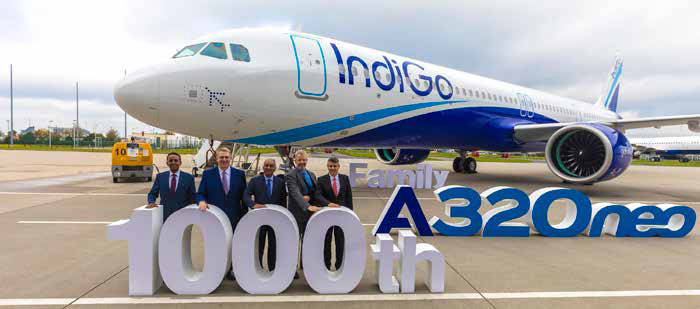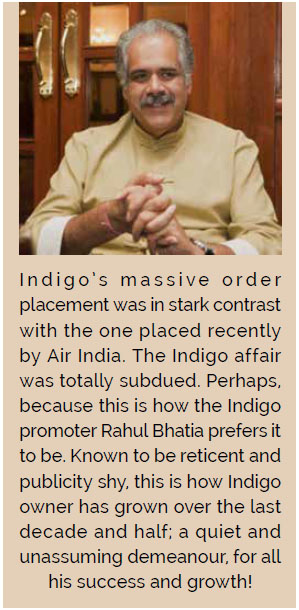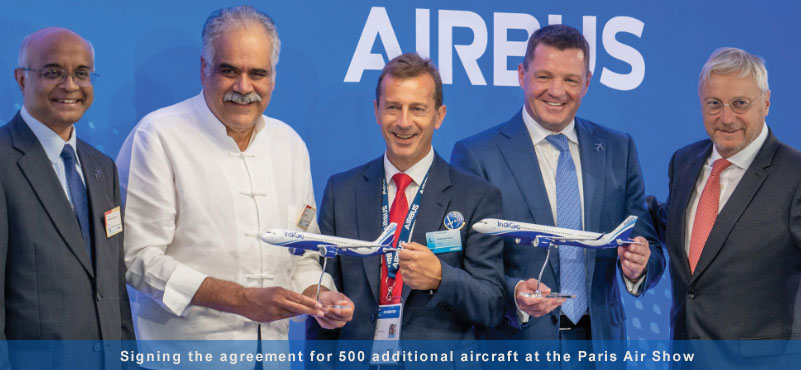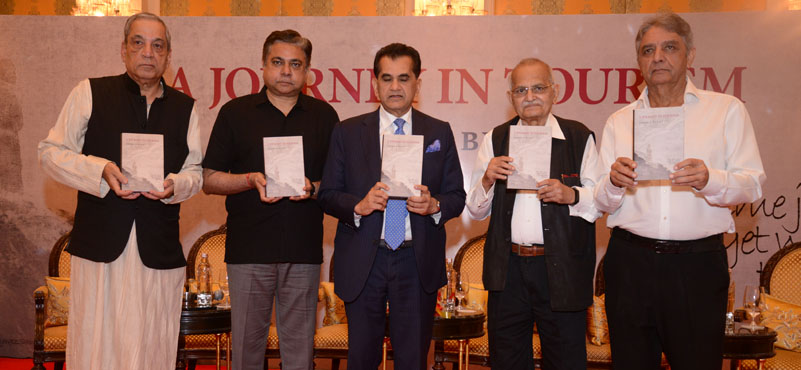It is that crucial time when air transport needs to be recognised as essential mode of travel, just as roads and railways. We quote extensively from an exclusive report shared by CAPA India, and build the larger narrative for air transport growth in the country.
At a joint press conference at the Paris Air Show, along with Airbus, IndiGo announced a firm order for 500 A320 family aircraft. In terms of volume, this is the largest order for commercial aircraft ever placed in global aviation. Coming as it does just four months after Air India set the previous record, with an order for 470 aircraft, it has clearly cemented India’s position as the next growth engine of global aviation. Between these orders and IndiGo’s existing backlog, these two carriers alone have over 1450 aircraft on order, strengthening the growing optimism about the Indian market.
Indigo’s massive order placement was in stark contrast with the one placed recently by Air India. While the latter became a star-studded PR event, with PM Macron and President Biden joining in the celebration, along with PM Modi, welcoming the Air India order with both Boeing and Airbus, the Indigo affair was totally subdued. Perhaps, because this is how the Indigo promoter Rahul Bhatia prefers it to be. Known to be reticent and publicity shy, this is how Indigo owner has grown over the last decade and half; a quiet and unassuming demeanour, for all his success and growth!
Indigo’s order will position the airline to create routes as far as Eastern Europe. But not beyond. And here is where the big question remains. Will Indigo remain a one aircraft fleet, and if so, for how long? Sooner than later, it will need to go wide body, and also go for the truly long haul. But in the meanwhile, it has preferred a code share with Turkish, with one stop flights across selected Turkish destinations. Opinion is divided and Rahul Bhatia will need to take a call!
According to CAPA India, overall, there are good reasons for this positive outlook. Because as of today, the market remains highly under-penetrated. The total commercial Indian fleet of fewer than 700 aircraft is smaller than some of the world’s largest individual airlines.
“Meanwhile, traffic recovery In India post-COVID has been amongst the strongest in the world; the airline market is now 100% privately-operated following the divestment of Air India; the development of airport infrastructure is continuing and apace; and economic regulation is maturing. India has long shown promise, but has struggled to realise its potential. It may finally be set to take its place as the global aviation market of the 21st century”, said a CAPA report exclusively shared with Destination India.
“The aircraft order book for Indian carriers now stands at around 1520 (excluding for now the SpiceJet and Go First orders, which are assumed to be in suspense). The number of aircraft on order is now more than double the fleet count as at 31-Mar-2023, the highest ratio of aircraft on-order to aircraft in-service of any major market in the world. And there will be more to come. Akasa is reportedly expected to place an order in the coming months for 200 aircraft, or possibly higher,” says the CAPA report.
With around half of Air India’s order expected to be consumed by replacement of existing aircraft, the carrier will need to start preparing for its growth requirements beyond 2030. As a result, a further significant order could be expected from Air India in around FY2026. And while IndiGo may have its fleet plan in place till 2035, it too will likely need to place another mega-order within the next five years or so. Should Go First and SpiceJet be successful in achieving financial stability, their existing orders (and possibly new ones) will also need to be considered.

Given the immense potential that exists, these current and expected orders are not unreasonable. And in time to come, we expect to see an increasing and much-needed focus on widebody equipment. The market has the potential to support rapid demand growth on short, medium and long-haul routes for decades to come, said Kapil Kaul, CEO and director, CAPA India.
The fact that India now has two well-capitalised carriers that have the ability and willingness to take significant bets on the potential of this market, augurs well for the stable, long-term growth of Indian aviation.
 Managing growth at this rate will come with its own challenges, for individual airlines, for the ecosystem and for the government. But the orders placed by Indian carriers in 2023 have certainly drawn the world’s attention to what is happening in Indian aviation. And we have as yet barely scratched the surface of what is possible. There have been some foreign carriers who have evinced keen interest in investing in the Indian market, such as Qatar Airways, which has repeatedly expressed confidence in the growth and potential of India. Perhaps, the time has come, even more strongly, for such an expression of Interest.
Managing growth at this rate will come with its own challenges, for individual airlines, for the ecosystem and for the government. But the orders placed by Indian carriers in 2023 have certainly drawn the world’s attention to what is happening in Indian aviation. And we have as yet barely scratched the surface of what is possible. There have been some foreign carriers who have evinced keen interest in investing in the Indian market, such as Qatar Airways, which has repeatedly expressed confidence in the growth and potential of India. Perhaps, the time has come, even more strongly, for such an expression of Interest.
There is also the potential of India creating hubs in air transport, becoming a bridge between East and the West. We have very successful hubs on both sides, namely Bangkok and Singapore in the East and Dubai and ME in the West. India can make a kick start with the growing infrastructure coming up at Delhi’s IGIA, not to mention the Greater Noida airport that is said to be mulling on a strategy to create hubs.
But all this may not be enough. Are we going for a duoplay in the Indian skies, meaning just two major carriers. Is that a healthy trend into the future? For a size of India, would we need some five or six carriers, of varying descriptions. How will this come around? For one, some of the existing ‘other’ carriers that are not doing too well, may find new suitors, giving rise to some long-term sustainability. Go First is said to be in a revival mode, with a new trance of Rs. 425 crores from its existing lenders. Spicejet will not just go down, Ajay Singh has strong survival instincts and will look around for partners, if he not doing so already. Evaluations can always hinder progress in such situations.
Having said this, it is big time for air transport. Please note we prefer not to call it civil aviation. And, that is for a good reason. It is time the country planners not only realised but also put into place a better recognition of ‘civil aviation’ as essential air transport, just as essential as railways and roads. For this, a name change can possibly be a first step. We have renamed a few ministries keeping in mind our growing understanding of how these would work? Like our ministry of corporate affairs, for instance. To shed the elitist tag, we need a new outlook, best ushered in its name change.



































